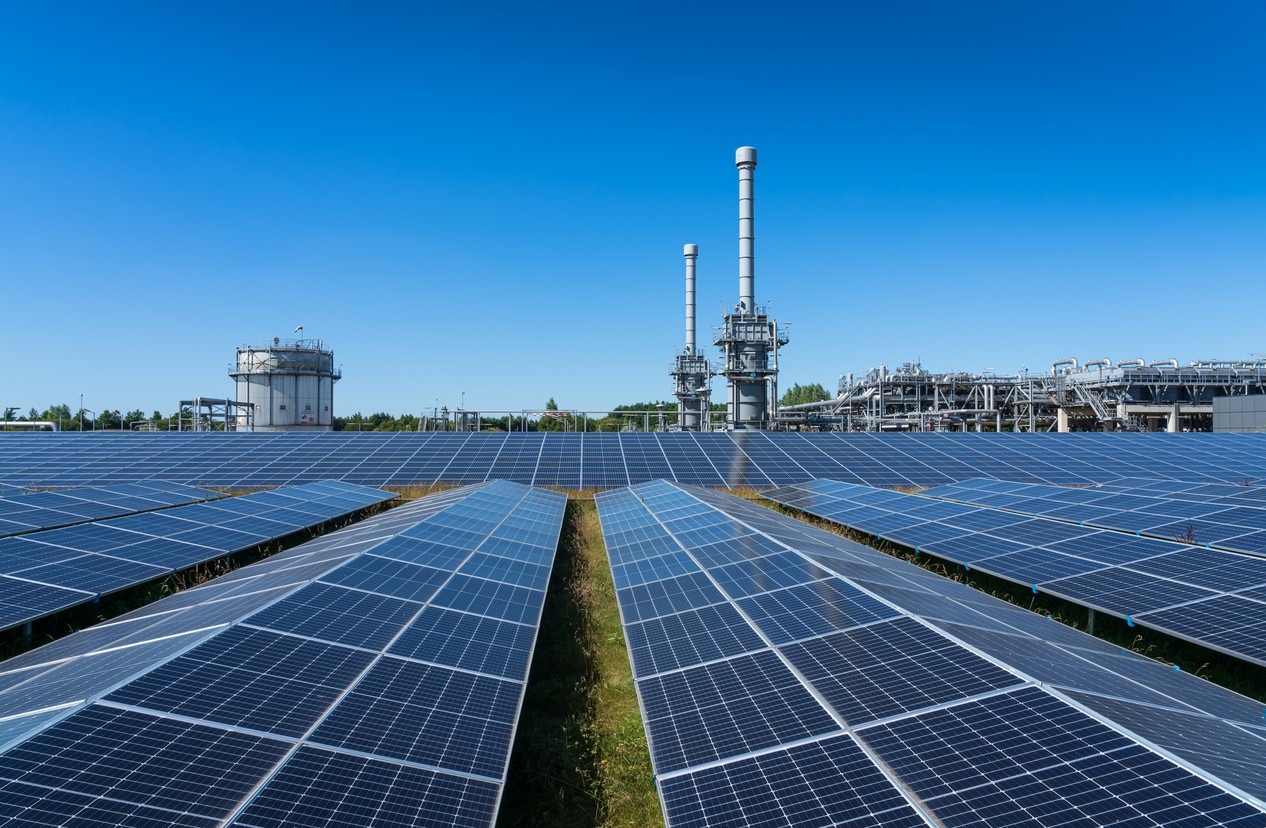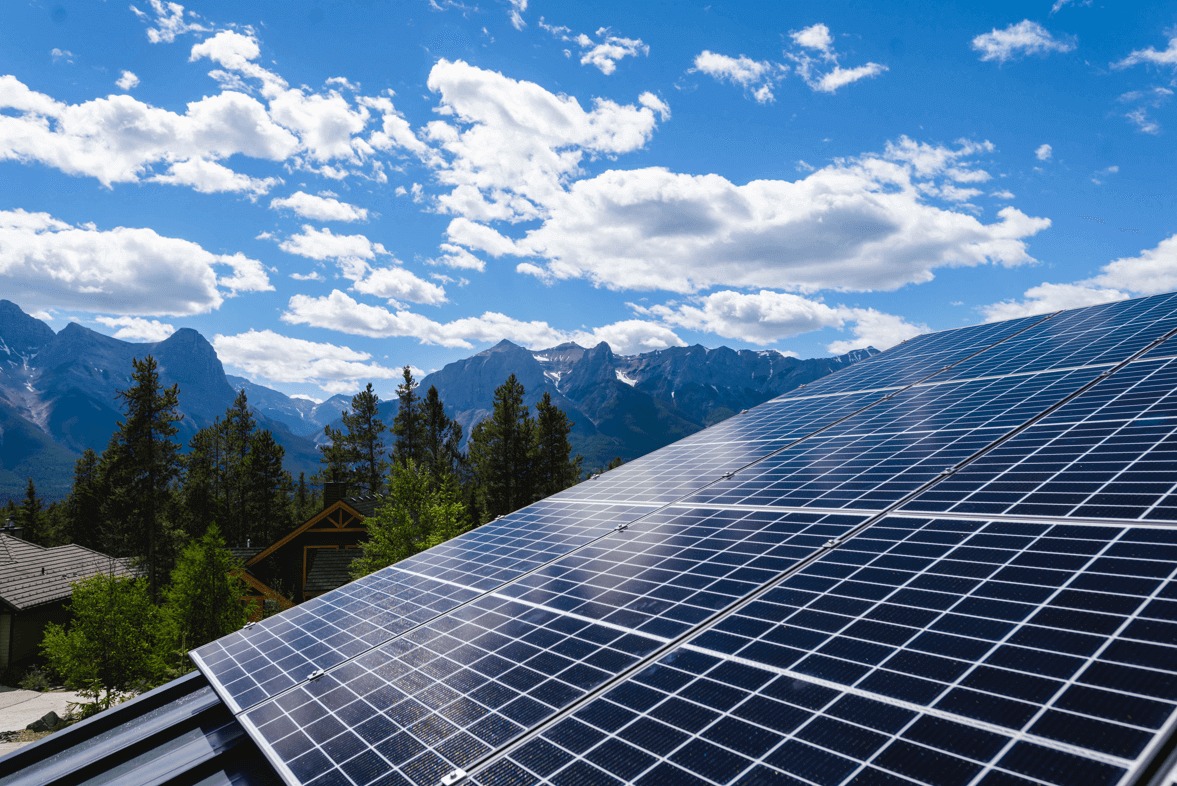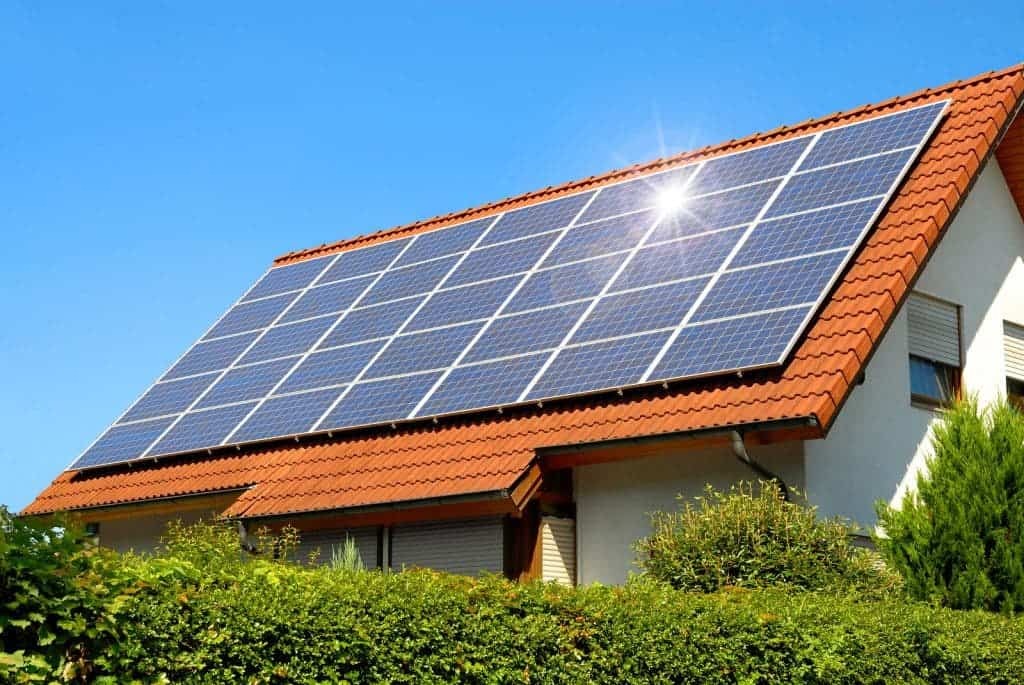The Impact of Temperature on PV Cells
Hot temperatures decrease the efficiency of photovoltaic cells. The reasons for this are rather obvious. Semiconductor material in the cells will generate a smaller amount of electricity under the same spectrum of the sunrays. In one study, it was found that for each excess degree above 25°C, efficiency drops by 0.5% across the state of Arizona.
Temperature Coefficients and Understanding PV Panels Performance
PV cells are given a temperature coefficient that is usually expressed as a percentage per a single degree. A PV cell might have a temperature coefficient of -0.3%. This means when temperatures exceed the base limit of 25°C, the solar panels will lose 0.3% of their efficiency per degree. This knowledge is vital to determine what will happen to solar panels when the temperature rises.
Energy Yield in Real Life
In real life, the amount of energy, which PV cells can generate, also highly depends on the local climate. In Las Vegas, where summer temperatures average 40°C, solar panels will work at 85% from their full capacity. It may lead to significant energy yield losses over long periods of time.
Cooling Techniques and Their Limitations
There are two ways to help deal with the heat. A solar panel should not be installed directly on the roof but should have a bigger gap allowing better air circulation. It reduces temperatures by 10°C. A solar panel should be made of a material that withstands high temperatures better. The remaining part of this text is dedicated to the demonstration of convincing evidence of the above-described innovations in practice.
Desert Installation of Thermal Solar Power Plant
Due to their cooling installations, a comparable solar farm located in the Mojave Desert works more efficiently than a similar farm with no enhanced cooling by 5%. There is quite a convincing evidence that adaptive engineering can protect PV cells against high temperatures. Research on new materials that do not lose their efficiency under high temperatures is ongoing. In one of such cases, PV cells have shown no loss of efficiency under 75°C. The efficiency of most panels is estimated to be 98% at 25°C and as little as the low 83% at 40+°C. Such materials, will be cheap and widely used in the sun-abundant Middle East and such parts of the USA as California, Texas, and Nevada.
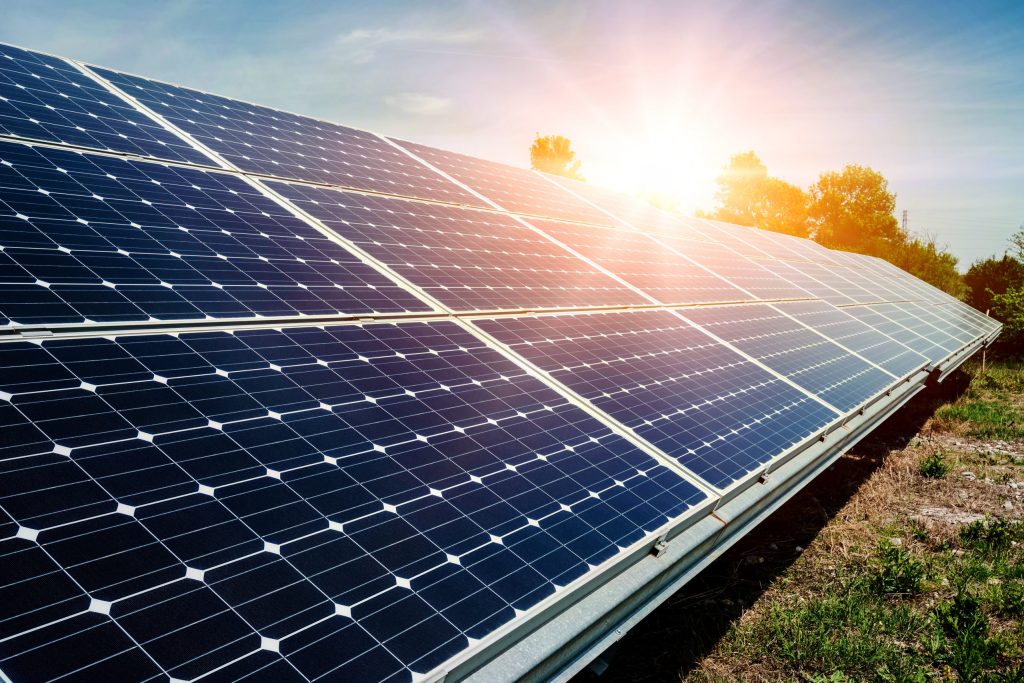
Recombination Losses Explained
A Primary Factor for Reduced Efficiency in PV Cells
Recombination is the process where electrons and holes fail to generate electric current but rather recombine, introducing energy as heat in the PV cell. The recombination rate increases with impurities and recombination centers in the solar cell material.
Types of Recombination
Three main types of recombination are radiative, Auger and SRH recombination. Radiative recombination resulting in the emission of a photon is an important recombination mechanism to consider with direct bandgap materials such as gallium arsenide; however, silicon and several other materials exhibit indirect bandgap and do not emit a photon upon recombination of an electron and a hole. The Auger recombination where energy is transferred to another electron or hole is more relevant to concentrated photovoltaic cells. SRH recombination through a defect state in the semiconductor is the most common and sometimes the primary recombination mechanism in a silicon solar cell.
Measurement of Recombination Losses
Silicon solar cell behaves with a quantum efficiency of 90%. The cell can be exposed to defects, which would cause an increase in recombination and a subsequent decrease in power output. If enough defects are present, the quantum efficiency of the cell will drop to 75%. This correlates to a 20% increase in recombination and can be used to diagnose production problems. Another example is a silicon PV cell with a quantum efficiency drop from 90% to 70% demonstrating a decrease in the cell’s power output.
Reducing recombination will often result in a gain of a few percentage points in the cell’s efficiency. Bulk recombination representing the most significant limiting factor, improving silicon purity and crystal quality to minimize bulk recombination rates might take a typical polycrystalline silicon cell from 16-18% instead of 15%. A common solution for recombination is the use of a passivation layer such as silicon nitride or aluminum oxide on the cell surface. An optimized passivation layer will greatly reduce the recombination enabling greater cell efficiency.
Wavelength Challenges in Solar Energy
Solar Spectrum Influence
Solar panels are meant to convert light into electricity but not all wavelengths of light are equally beneficial. The solar spectrum including ultraviolet, visible, and infrared light is the underlying issue. The majority of commercial photovoltaic cells are tailored for visible light, which means that they are less effective when exposed to other wavelengths of light. Ordinary silicon solar cells have a peak efficiency of around 500 nm though they are significantly less efficient at wavelengths exceeding 1100 nm or 400nm. The cells have spectral dependency of their efficiency. The silicon cells use about 85% of the total energy emitted by the sun, meaning that around 15% of it is not utilized since the majority of it is infrared.
Absorption in Materials and Bandgap Engineering
The bandgap of a semiconductor material determines the efficiency of absorption of other lights. Unfortunately, silicon cells have a bandgap 1.1 eV, which not beneficial in absorbing the total light produced by the sun. Lower energy or low-bandgap photons having energy below1.1 eV pass through the cells while the higher energy photons of 2.2 eV above the bandgap absorb excess heat. Advanced solar cells use other materials that can absorb a wider range of light or use certain structures to achieve the role. The tandem cells have multiple stacks with each type having a different bandgap.
Another aspect affecting the efficiency of solar cells is the thermal effect. Most of the time, real applications will result in the solar cell encountering higher temperatures. It often leads to the materials of the cell becoming more conductive, which increases the rate of recombination of charge carriers and reduces the voltage. In silicon standard solar cells, one degree Celsius temperature increase might result in an efficiency decrease of about 0.5%. Such a dependency is critical in the context of arranging a solar installation in a hot climate when there is a need for cooling or materials that can withstand heat.
Air mass and atmospheric conditions also have an impact on the efficiency of a solar cell. Solar cells are less efficient if the sunrays hit them at a particular angle and the light goes through a bigger amount of the atmosphere. The standard testing conditions of the solar cell efficiency have it rated as AM1.5 spectrum at the 48-degree angle. At the higher latitudes, the solar cell is less efficient because of higher amplitudes. I chose these two aspects of airborne hazards because they seem to cause the highest decrease in efficiency.
Maximizing Efficiency
One practical example of the application of the knowledge concerning the use of given wavelengths in a given environment relates to solar farms typically situated in the desert. In these installations, bifacial solar panels are commonly employed, which can absorb light on both their sides, including the reflected and diffused light they produce on the surface beneath them. In this way, the system utilizes more spectral wavelengths and increases overall efficiency. To generally track the movement of the sun and adjust their position accordingly, various tracking systems are sometimes used, invoking mathematical models to determine the optimal angle. Decreasing the adjustments to the system might reduce its efficiency whenever the spectral conditions of the environment are assumes as constant. Various sensors and monitoring devices are used to continuously validate the data and adjust the solar panels.
Reflection Losses in PV Cells
Issues around light reflection
The problem of reflective light efficiency loss can be experienced through photovoltaic cells which are used in working with solar cells. Here is how it works: when sun light hit the exposed front face of a solar panel, the photons which have been hit by the cell will be converted into electron-hole pairs leading to a significant proportion of the photovolt hit by the panel. A substantial amount of light reflects off, rather than travel in and get converted into the electron-hole pairs so accents a an efficiency loss. For some materials, a large amount of is reflected without the sheet having any anti-reflective action. Quite a popular element in solar panels is silicon and without any kind of textural or other anti-head, it can reflect more than 30% of a Photon of light. Bzura, F. 2006 with a low sheen have relatively proven to be less flashy and the light reflection amount reduced instead of using the high sheen that is intended to increase gloss. Photovoltaic solutions should be developed in a way that the amount of light reflected is minimized and the amount of light absorbed increased above a high level.
Ways of Minimizing Reflections
For the cells’ surface, in order to obtain a better performance, manufacturers opt to apply a layer of an anti-reflective coating of one out of several types. One of the methods frequently used by silicon solar cells manufacturing companies consists in applying a thin layer of silicon nitride to the silicon. This coated layer not only reduces the reflectivity of the band but also serves as a means of avoiding surface degeneration. To be more specific, it causes the sunlight reflected off the hours in which it is out of phase with the surface light. The measurements register the points where the reflections are not more than 5% of that on the uncoated surface, instead of 35%, where it used to be with the surface without coating. The sunlight absorption across the visible area by percells can be increased [ Bzura, F., 2006]. The second work area is constructing textured light traps on the band surface. Thus, several small pyramids or a lightly random roughened surface on several microns increase the sunlight absorption across the visible area by more than 20% over a flat area.
Solar panel and Performance Monitoring Enhancements
If a panel is mounted on the roof, it faces the sun at the slot surface, and the panel at the slot minimizes the incidence angle, so a flat plate at Other angles, if they are disposed more frequently, is indicated. The Mojave Desert solar farm is an example of an existing setting for any useful application. This is not a task that looks to the future because technology used to track devices requires real-time access to data about The sun’s location and changes position through normal panels throughout the day. A tracking system has already been introduced into practice, taking into account the growth of any mount through which the desert panel engineers listen to and track each array. Such monitoring arranges at the Mojave Desert solar farm and ensures the panels follow the movement of the sun. When the sun moves, the panels are disposed of and reconfigured to the array with the help of the sun. It tries to minimize reflection by configuring the parameters to the optimal angle to double the output. Furthermore, the efficiency settings minimize the reflection of the intensity below the array, there also a relatively purification of panels whose output is typically balanced.
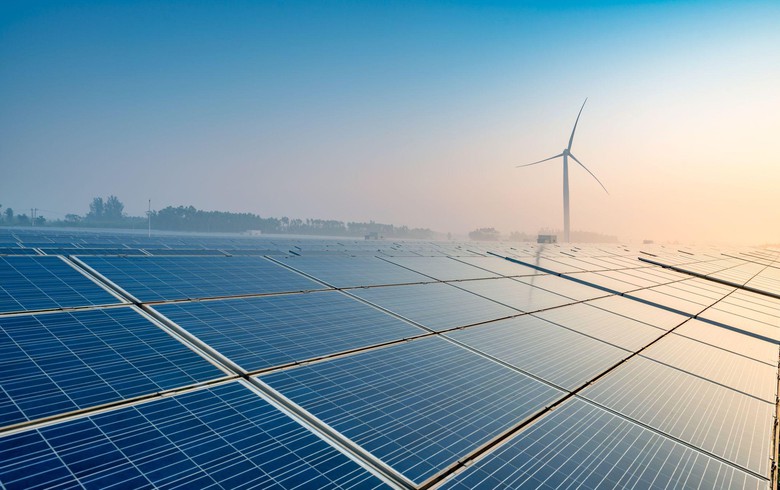
Structural Imperfections and Efficiency Reduction
Material Defects in PV Cells
Defects in the material of photovoltaic cells are the primary driver of efficiency. These defects are in the form of dislocations, grain boundaries, and impurities in the crystalline structure of the semiconductor.
For each of these defects, there is a recombination center for both types of charge carriers, thereby reducing the response to light. The electrons and holes recombine before they contribute to the current, and this effect was particularly dramatic for some of the first PV cells developed. In a typical polycrystalline Si solar cell, imperfections can account for up to 5-10% of its efficiency, depending on the quality of the Si.
Advanced Fabrication Techniques
High quality single-crystal silicon is used for the substrate, and a variety of “gettering” processes are used to remove trace impurities from the Si”. These processes vastly reduce the number of grain boundaries, as well as remove impurities from the material. The fewer pathways for recombination there are and the cleaner the silicon is, the better the cell’s efficiency will be. High-grade Si and advanced anti-reflective coatings must be employed to achieve high-performance cells.
Explanation of Their Importance
In the production of large-scale solar installations, any small imperfection in the solar cell may accumulate to thousands of panels and may cause significant energy loss. This makes it necessary to fine-tune the installation of the panels by strictly observing their specification prior to use. The correct/standard implementation of this will ensure that the panels become replaced if any underperforms.
Example of Industry Response to Structural Imperfections
In the Kalahari Desert, the solar panels were designed in such a way that they have a high spectral response in order to reduce their susceptibility to material defects. The panels are built using sophisticated anti-reflective coatings. These panels are constructed to have a minimum amount of light reflectance, which makes them significantly smaller in surface area compared to conventional solar panels. The defects in the silicon used to make the panels are also limited by the high-grade of the material. Regular data analytics are incorporated in the process to forecast whether any panel is approaching the end of its life and will need to be replaced.



